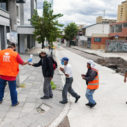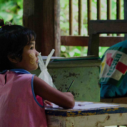
Search
Articles

bMPI supporting the private sector to achieve the eradication of multidimensional poverty in Costa Rica
In October 2015, Costa Rica took a transcendental step in its attempt to better identify and attend to the country’s most vulnerable population by establishing the Multidimensional Poverty Index. This led the Central American country to consider the use of five dimensions that encompass what would be known as the multidimensionality of poverty.

Using Multidimensional Poverty and Vulnerability Indices for Equitable Policy- Making in the Context of Health Emergencies
The World Health Organization (WHO) and the Oxford Poverty and Human Development Initiative (OPHI) have been collaborating to explore how multidimensional poverty and vulnerability indices (MPIs and MVIs) could be, or are already being, used to inform equitable plans, policies, and interventions in the preparedness for, response to, and recovery from, health emergencies. This article summarises some key findings from this collaboration, which prominently drew upon the applications of MPIs and MVIs by several Multidimensional Poverty Peer Network (MPPN) participants during the ongoing COVID-19 pandemic.

“The MPI is a great contribution to transparency in public management“
Iván Ojeda, a graduate in Administration from the Universidad Nacional de Asunción, and a specialist in Governance, Political Management and Public Sector Management from George Washington University, is the first Director of Paraguay’s newly created National Institute of Statistics (INE). Upon accepting this appointment, Ojeda took on a double challenge: founding this new institution and supporting the process for the development of the new National Multidimensional Poverty Index (MPI) in Paraguay. In this interview, Ojeda talks about the main challenges involved in the creation of Paraguay’s MPI, and its importance for public policy.

The South African COVID-19 Vulnerability Index
The COVID-19 pandemic hit the world unexpectedly. The first case of COVID-19 in South Africa was reported in February 2020. In March of the same year, the President of the Republic declared a state of national disaster in South Africa. By the end of March 2020, South Africa went into hard lockdown. The COVID-19 pandemic threatened to have a devastating impact in South Africa, especially for vulnerable communities. A targeted response was crucial in determining where the most vulnerable populations were located in terms of COVID-19 transmission in the country. Research was initiated to identify populations at multiple risk and develop a geographic visualisation tool (1).

National MPI of Thailand: The compilation process and the policy uses
With the success of constructing the Child MPI in Thailand in 2018, the Office of the National Economic and Social Development Council (NESDC) took another step in 2019 by producing the National Multidimensional Poverty Index (National MPI) as an additional official measure of overall poverty in Thailand. It was also constructed with the purpose of monitoring the progress of SDGs, particularly SDG 1.2.












